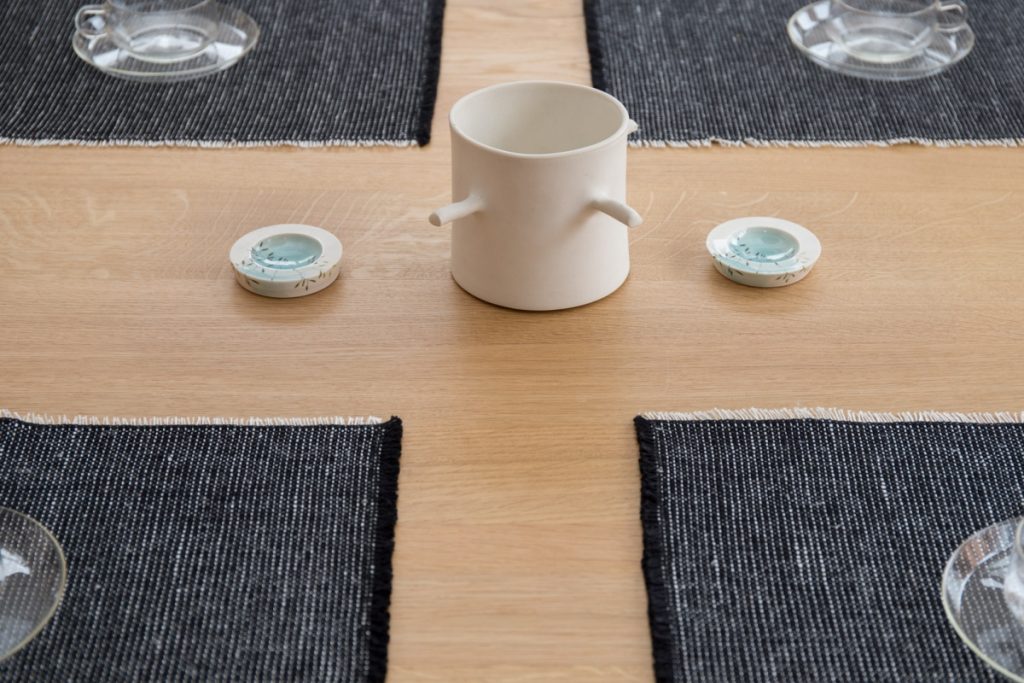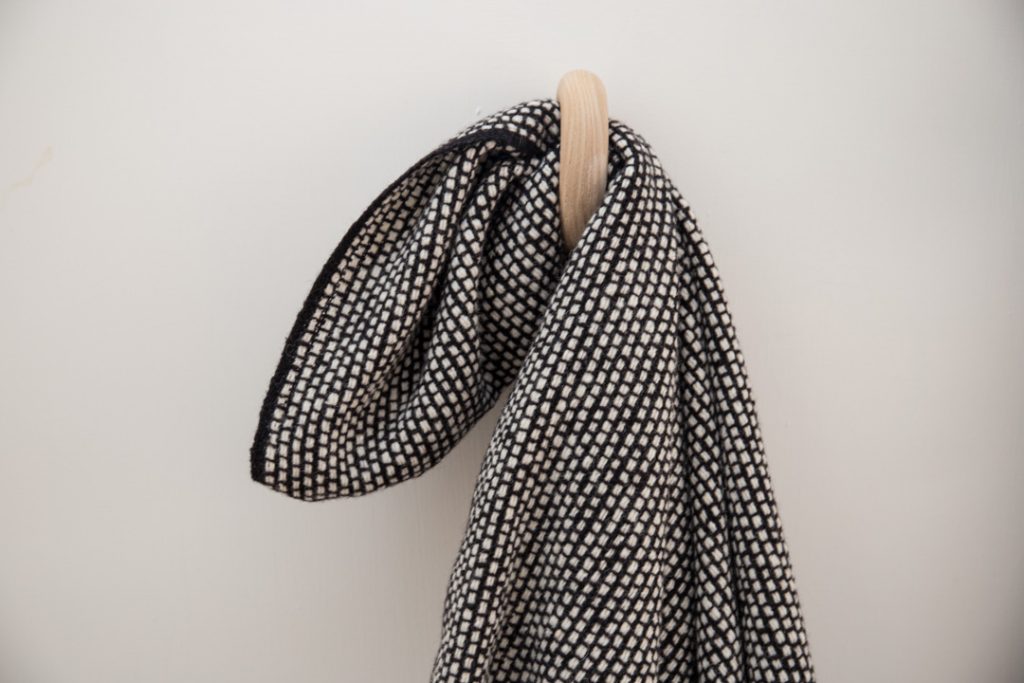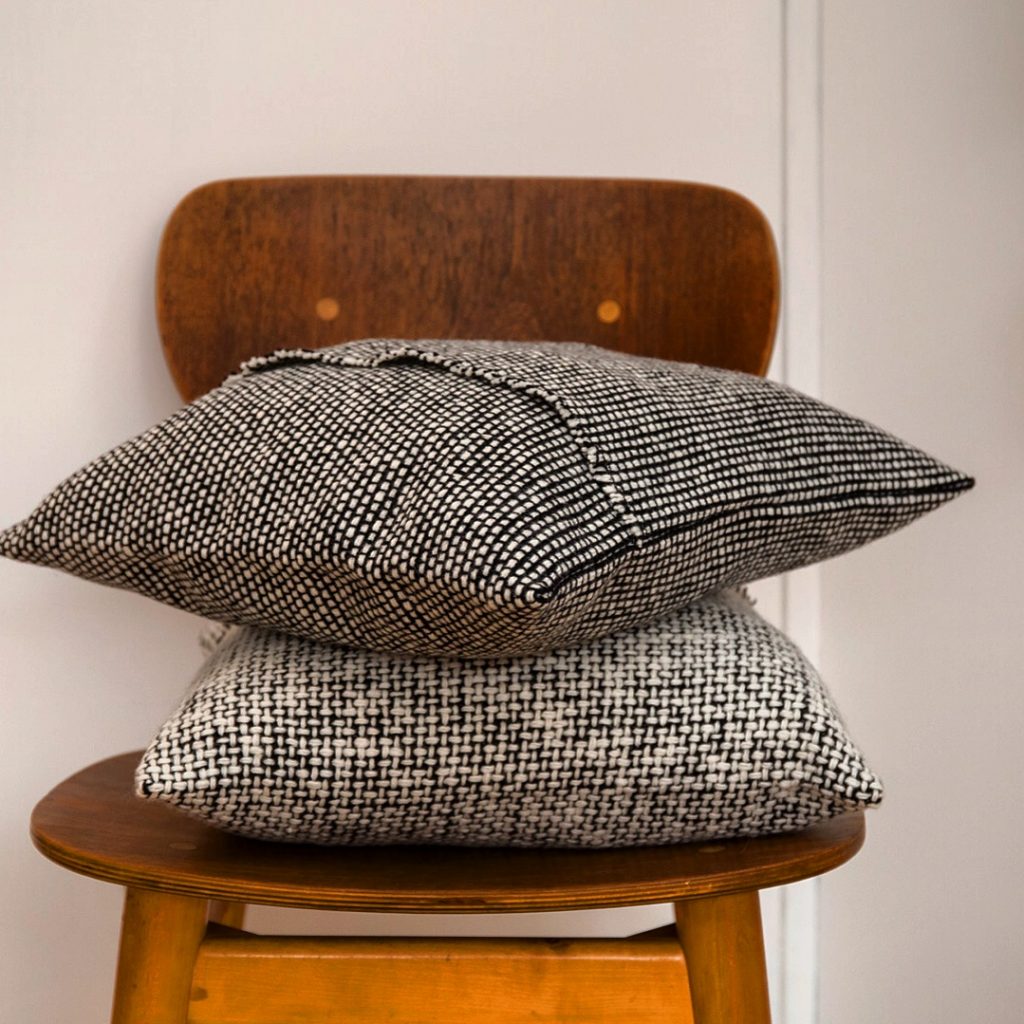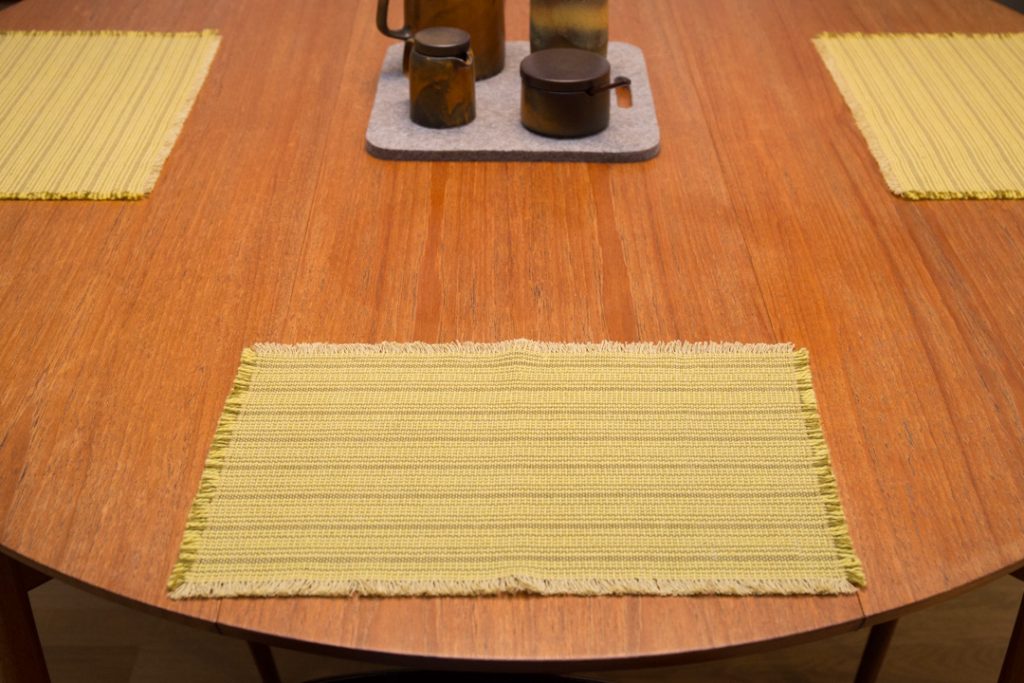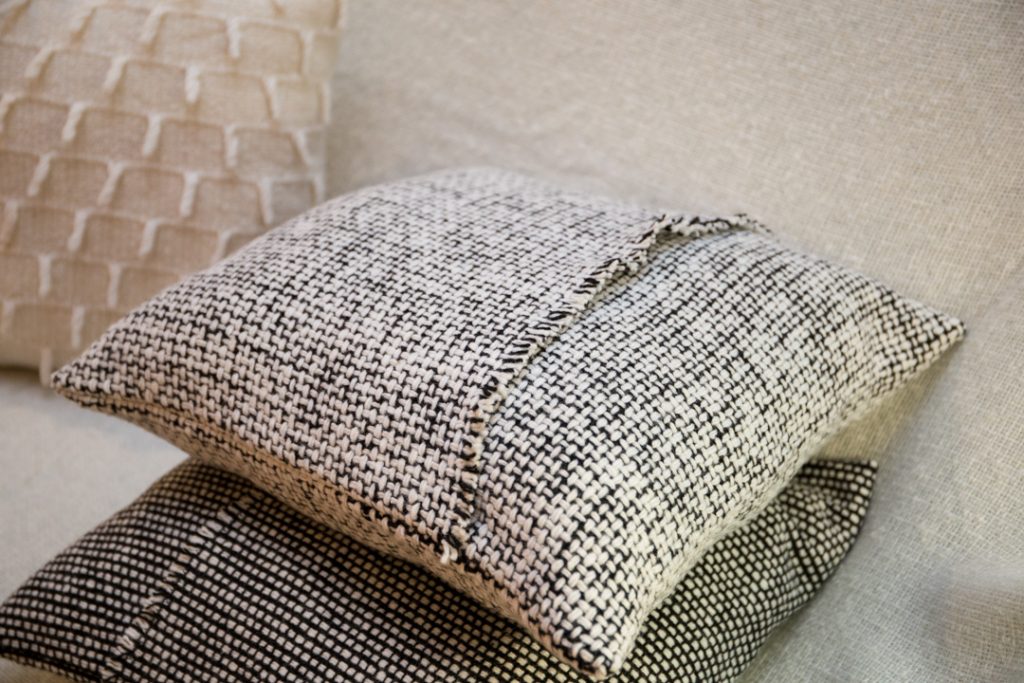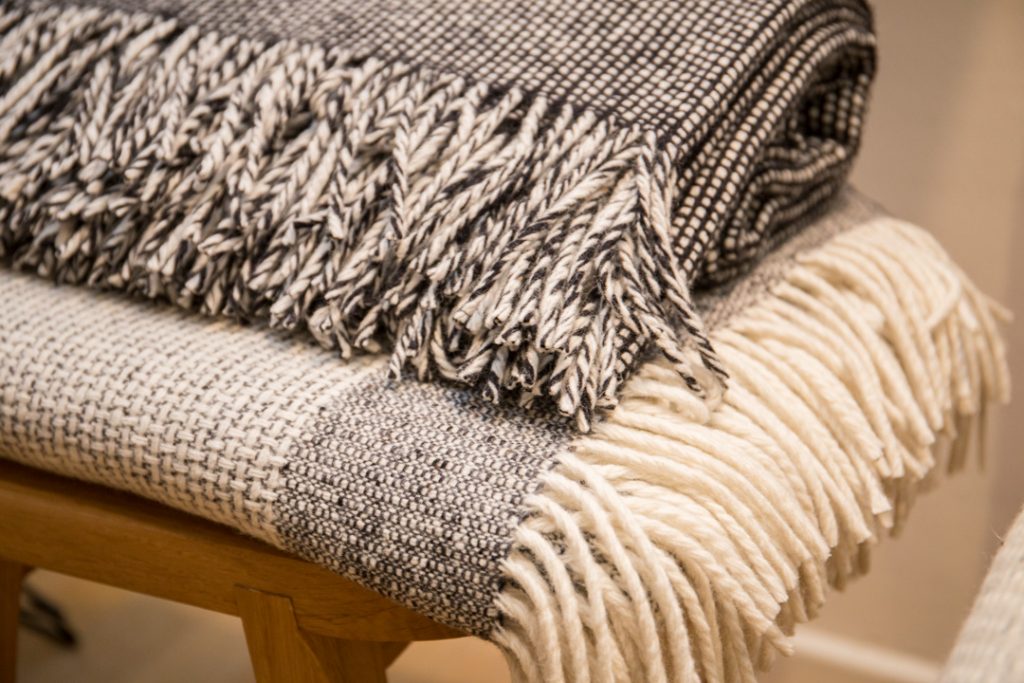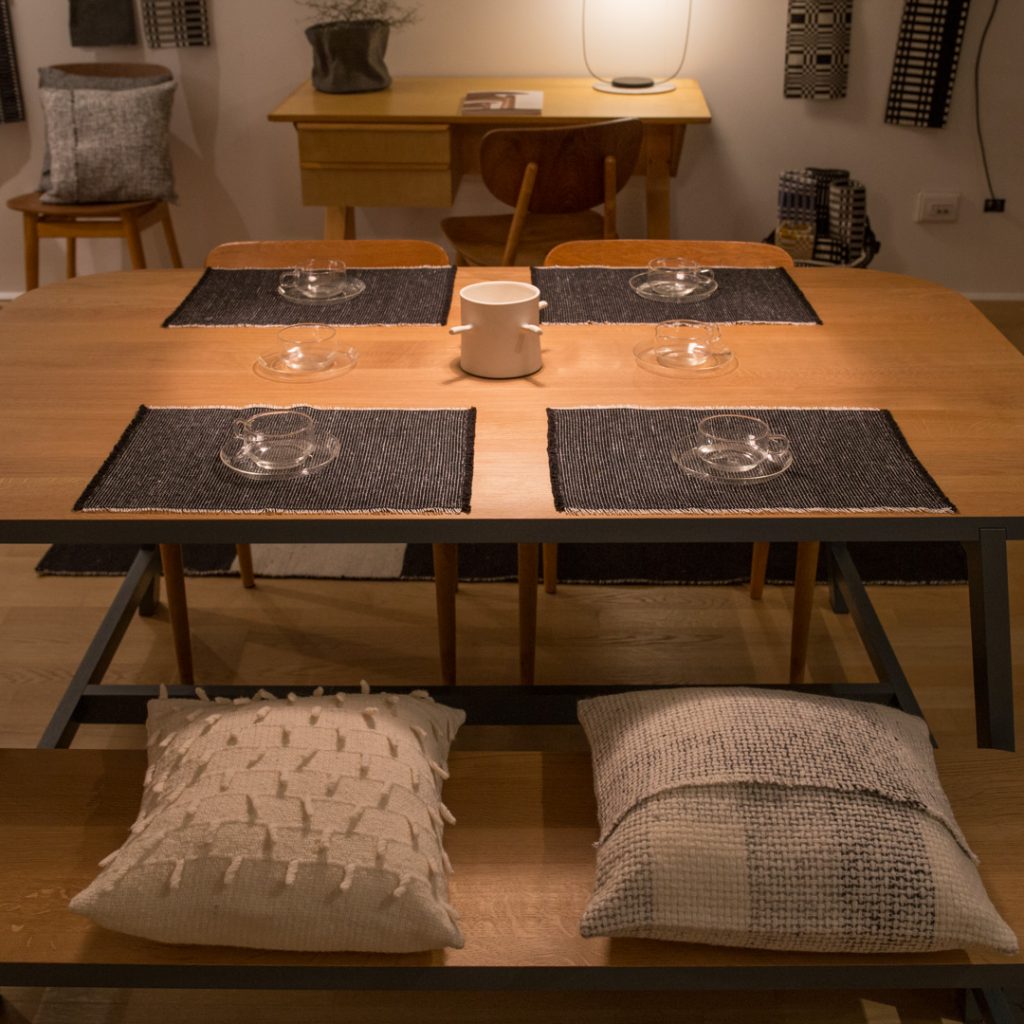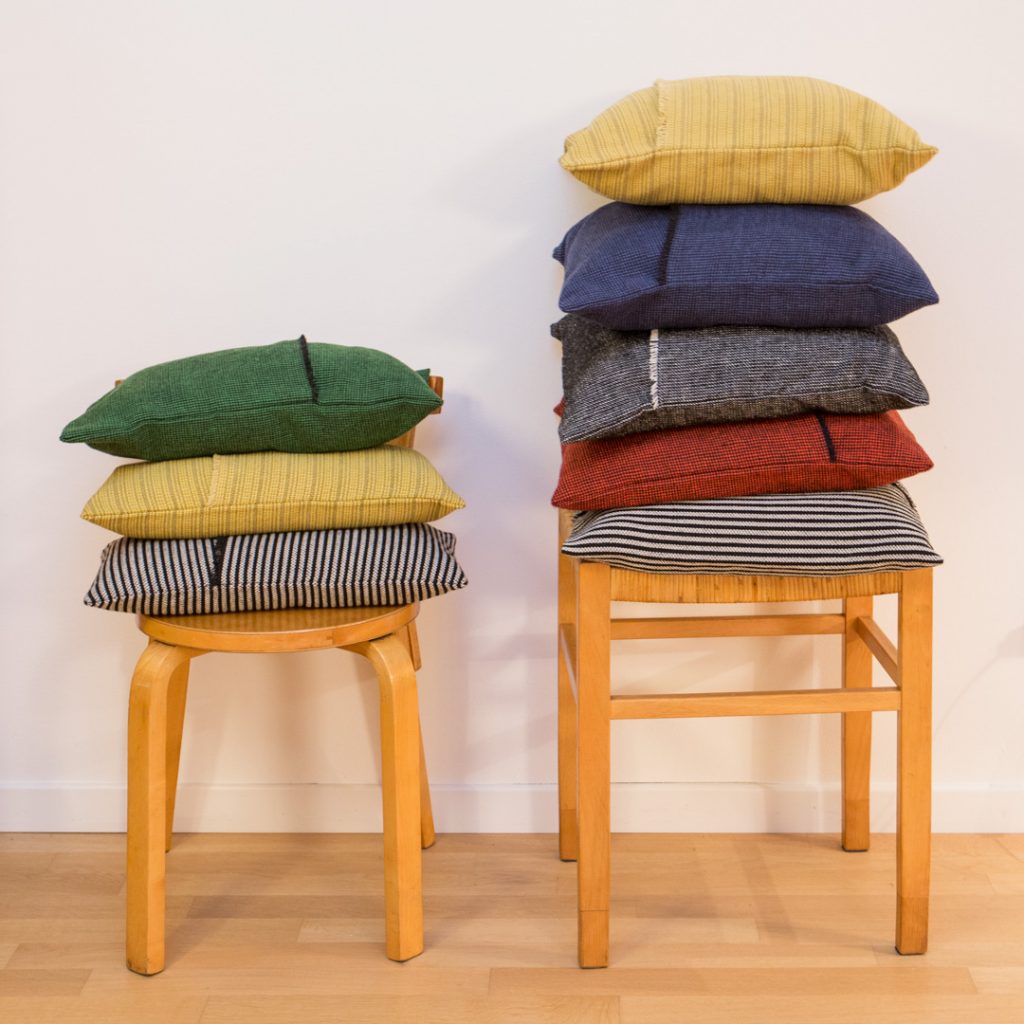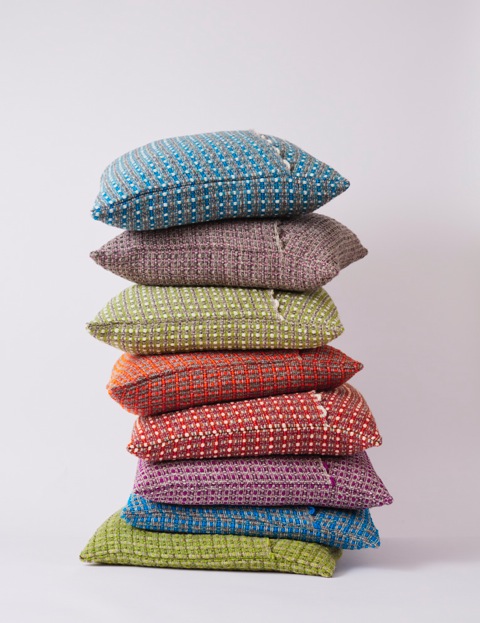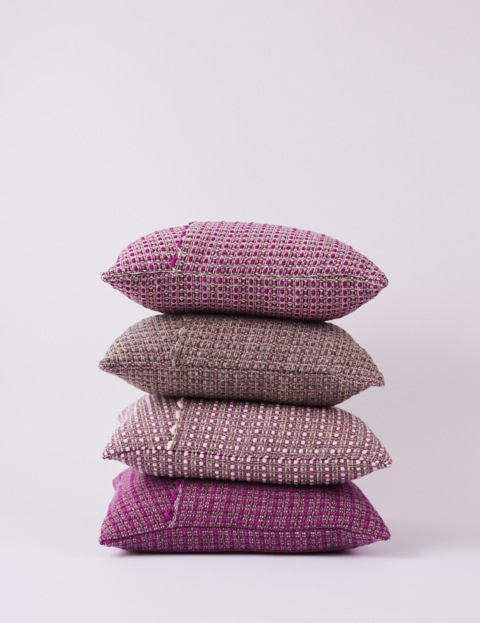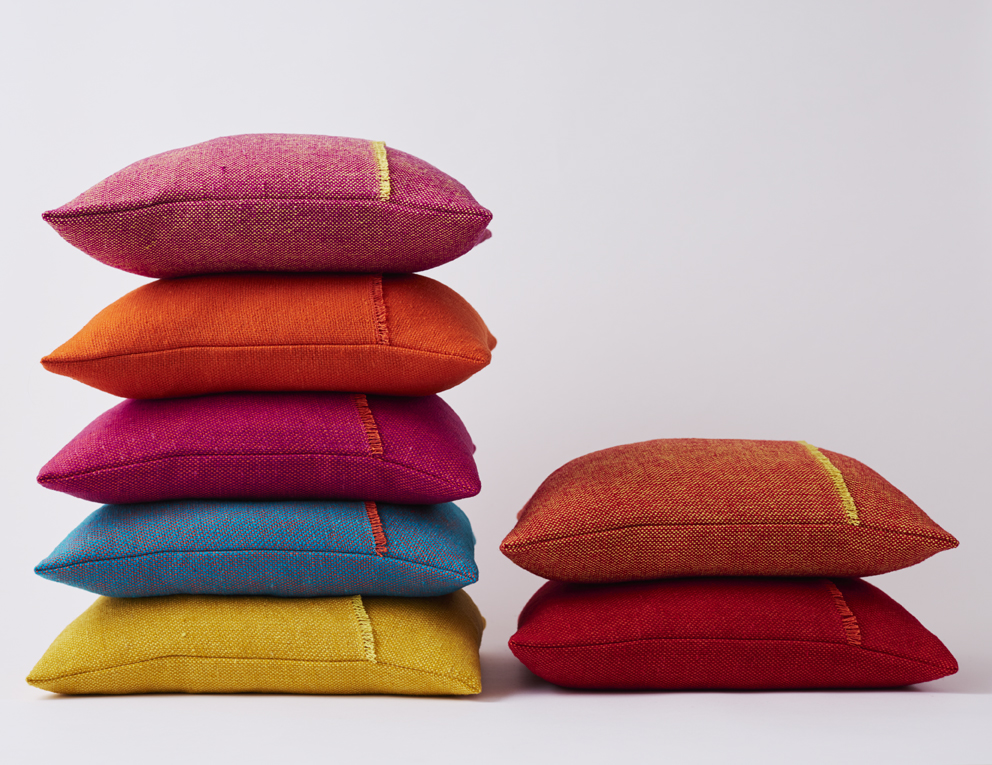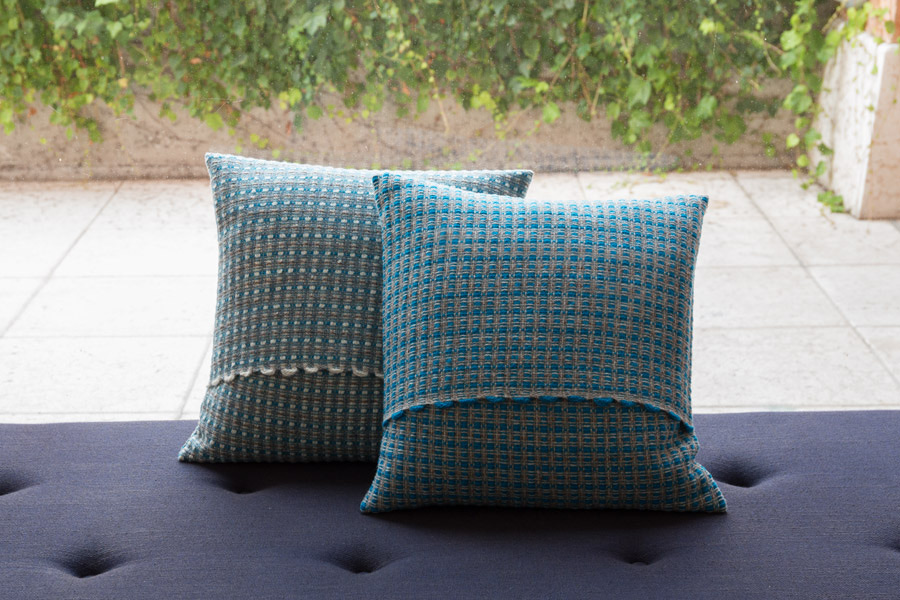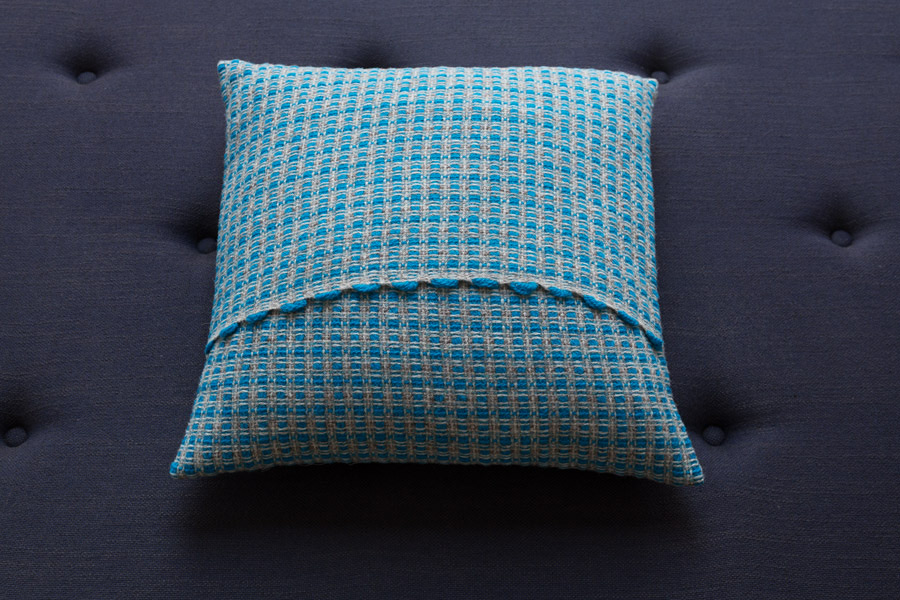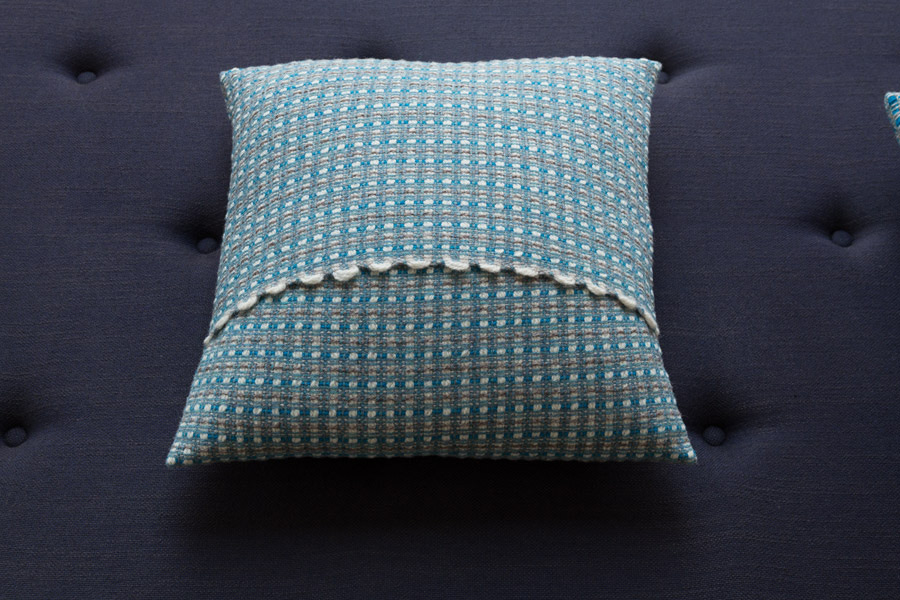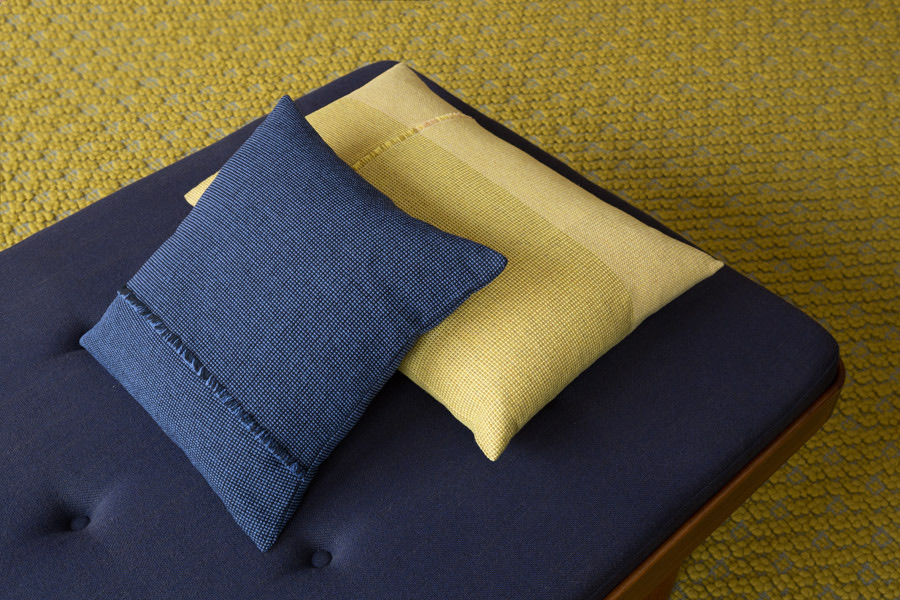Mourne textiles – cushions in Irish wool , loom-shaped
“There is nothing really to discover in weaving. It is simply a matter of evolution.” (Gerd Hay-Edie 1909-1997)
MOURN TEXTILES, manufacturers of hand-spun fabrics for furniture and fashion, at London Design week 2016 , presents a series of new designs drawn from the archives of workshops over 80 years ago.
“It is from the past that the future flows,” wrote Gerd Hay-Edie.
Gerd Hay-Edie was one of the 20th century pioneers in handmade textiles.
Born in Norway in 1909, she worked in Britain in the early 1930s and later established her weaving workshop near the mountains of Mourne, County Down, Northern Ireland in 1949.
Gerd Hay-Edie used traditional weaving techniques on custom-made looms, passing these techniques on to his daughter, Karen Hay-Edie, and later to his grandson, Mario Sierra.
Moving to London in 1932 from Norway, Gerd first worked for the Rural Industries Bureau as a designer of traditional Welsh furnishing fabrics, clothing and blankets, which were sold in Gordon Russell’s showroom on Wigmore Street. Later he moved to Dartington, Devon, the experimental company run by Dorothy and Leonard Elmhirst, where he designed textiles and carpets. Here Gerd was able to experiment with different weaving techniques and combinations of yarns.
After their marriage in 1938, Gerd travelled through Asia. In Shanghai he learned the use of the Chinese loom and used the local spun cotton to create curtain fabrics. The techniques she learned were later incorporated into other designs, such as the carpet she made for the 1951 Milan Triennale.
Settling in Northern Ireland in 1948, Gerd established her own workshop and created her first carpets and cushions in November 1949. Gerd began to receive commissions, including carpets for furniture designers such as Robin Day for the Britannia Festival and the 1951 Milan Triennale. Gerd’s designs for Robin Day led to a relationship with Hille, the manufacturer of Day, who used two of his fabrics, Mourne Check and Mourne Mist, to upholster the Day chairs.
Other designers Gerd worked with included Terence Conran, who commissioned mainly upholstery and carpets, and the designer Sybil Connolly, who commissioned a range of teewds. Gerd also made teewds for Hary Aimes, House of Lachasse and Liberty in London.
His daughter and grandson continue the tradition today and keep the history of Mourne Textiles alive.
This beautiful company is represented in London by Margaret Howell, who has explored the vast archive of Mourne Textiles and curated an exhibition illustrating Gerd’s talent and influence on mid-century modern design. “The company achieves the richness and depth of texture that has always attracted me to handwoven textiles, and their design complements perfectly the mid-century vintage furniture we sell in our shops.” ( M. Howell )
MOURNE MIST CUSHION
The vibrant weave of the Mourne Mist was first designed in 1952. Hille, the British furniture manufacturer, used this design to upholster pieces by Robin Day, one of the most significant designers of the 20th century.
The range is in an eclectic variety of colours. These colours were inspired by bandoli found in Gerd Hay-Edie’s archives.
The fringe on the back of each Mourn Mist cushion is a different colour from the rest of the fabric.
SALTHILL TWEED CUSHION
This new collection of precious cushions, in 100% wool, originates from a design that Gerd Hay-Edie created in 1957 for the Dublin architect, Michael Scott.
The range is available in a palette of Sky Blue, Mossy Green, Heather Pink and Earthy Orange tones.
The colours are inspired by the natural landscape of the Mourne Mountains in the north of Ireland.
The cushions in the Salthill Tweed collection feature a unique selvedge, visible on the back of the fabric, and only possible by hand. The grey shades of the tweed are achieved by joining undyed threads together. The white yarn is unbleached.
MALDWYN STRIPE BLANKET
A new blanket in the Mourne Textiles range. Gerd developed this double weave, originally known as the Welsh Bedspread, in 1933 while working as textile manager for the Rural Industries Bureau in Wales.
In 1934, the Welsh Textiles Association, used this weave as a representative of the British Industries Fair and Gordon Russell, the respected London designer, used it to upholster chairs and sofas in his collection.
During the 1950s, the Welsh Bedspread was revived on commission for Michael Scott and the Shelbourne Hotel in Dublin. The Maldwyn Stripes, like the Salthill Tweed, was developed from sketches found in Gerd’s archives and woven using 100% wool.
Soft, warm and durable, Maldwyn Stripe brings a timeless feel to any home.
You can find out more about all the products from this wonderful company on their website:
http://mournetextiles.com
photograph:
©Tara Fisher
Read more about shipping and taxation.

